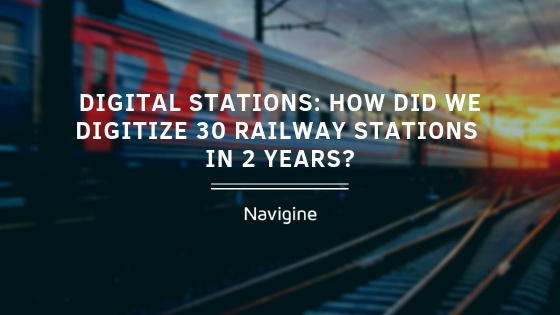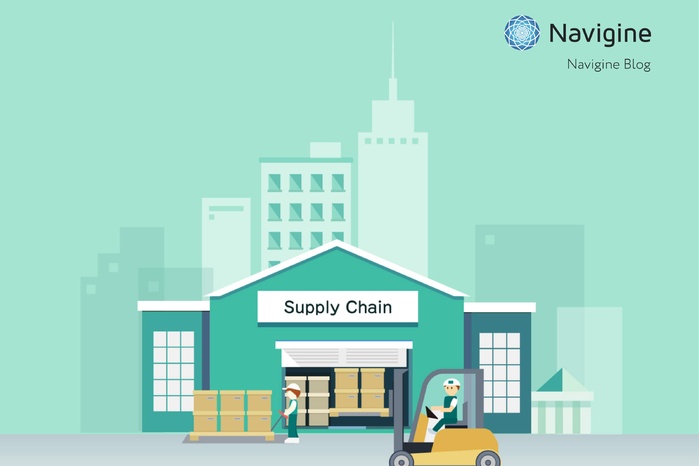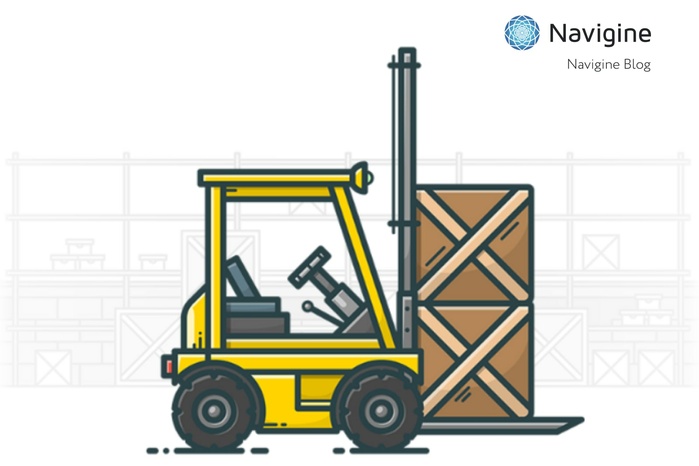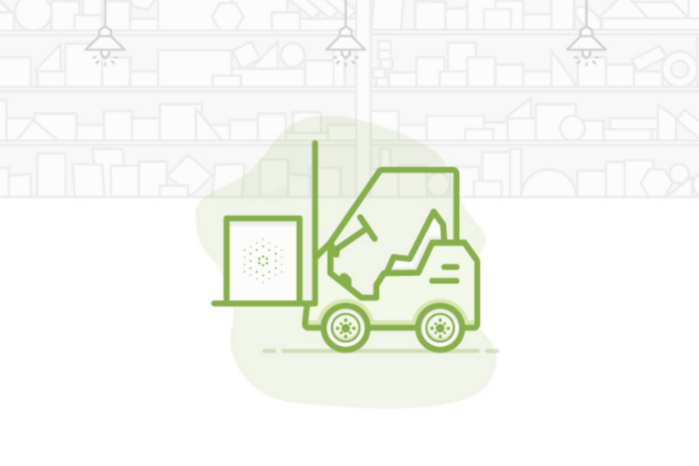Two years ago Navigine became a part of a highly experienced team, who worked for a tremendous project, the main idea of which was an implementation of a mobile navigation system in railway stations. Starting with the 9 largest transport hubs, a customer, the most significant and biggest railway operator in one of the European countries, decided to extend this practice to at least 20 other stations. We are going to digitize even more objects this year!
The product, a special mobile app, includes a wide range of different functions. For instance, it provides an opportunity to buy tickets online, to see an interactive map of a railway station, to position a person in a real-time or to find a way to various facilities. Moreover, this online guide could assist in identifying the most appropriate route to your platform or to the nearest cafe or even to the station director’s office. We implemented this solution into 9 railway stations during the first year, added 20 more objects during the second, and we are going to continue this project in 2019.
How did we win this contract?
The most frequently asked question about this railway project is “How did a small technological company get a chance to be a partner of a huge corporation?” It is easy: we know a few life hacks :) We prefer to work through an integrator, a company with diverse professional experience, extensive portfolio and a wide network of connections. This approach provides a solution for at least three important startups’ problems:
- The first one is a lot of paperwork and communications. A partnership with a huge company usually requires tonnes of documents and weeks of meetings. This is not what startups get used to deal with. Technological companies have to focus on their main competences and delegate communications to more skilled people.
- Secondly, integrators take the majority of financial risks. It is difficult for a small company to wait for money for 1 year because startups have to grow dynamically. While some months without revenue could lead to death for a small business, such delay is not crucial for a solid company.
- And finally, integrators can meet all requirements of the corporation, including a lot of formal conditions, such as an age of the company, dozens of similar projects in the portfolio, a number of employees, financial stability and etc.
So, a collaboration with a bigger partner is a perfect opportunity for a small company to prove itself, to highlight its own advantages and to attract some media coverage.
In two worlds: how we installed BLE-beacons and created a navigation system
Navigation systems today are a smart mix of software and hardware. They require installation of BLE-beacons offline and the development of a digital map with positioning functions. This was the first challenge of this project.
While some of our partners created a mobile app, others installed special equipment in railway stations. We had to participate in both these processes. And the final product met expectations of all stakeholders: both the railway operator and passengers. This is always difficult to find a way in an unknown railway station. Which platform should I choose? Who will provide me with useful information? Where can I eat or leave my luggage? Our mobile app answers all these questions and, even more, provides some interesting facts about the history of each station.
Location was the second challenge of this project. First railway stations were located in the megapolis, in one city with our headquarter. It was easy to reach these spots, to control the installation of equipment, to fix mistakes quickly. Now we are working in remote areas, and logistics increases the level of difficulty of our work. However, we already have a portfolio with 31 successful cases and this is very optimistic for us!
For foreigners
Partners launched this brand-new mobile app before the World Football Championship 2018, and it assisted a lot of tourists from throughout the world in indoor navigation inside the railway stations in Russia. Thousands of people benefited from mobile-navigation and mobile booking system which reduced the time spent on wayfinding. How? The most common navigation tools in modern railway stations are signs. But it is impossible to place so many sings inside a station building. There are just too many languages and facilities. Unlike offline navigation instruments, limited in space, the mobile-enabled system is unlimited. The latter provides much more useful information.
Not for passengers alone
More and more logistics hubs embrace the values and benefits of indoor navigation. A lot of airports throughout the world already have their own mobile apps, and some of them are even integrated into popular services such as Google.Maps. Вoth Berlin airports (Tegel and Schönefeld) are an example. Similar technology is used by Penn Station, one of the largest and important transport hubs in New York. The main idea of every navigation services is assistance for passengers in finding the most appropriate route from A to B.
However, such apps usually provide a wide range of different monetization opportunities. Due to an accurate and real-time analysis of passengers’ traffic the station authority could control the rent prices. Tenants could use this system as a marketing tool, messaging people, who are going by.
Indoor navigation systems are win-win opportunities, which means that such solutions obviously will extent covering more and more transport hubs globally.
If you are interested in learning more details, please contact us at info@navigine.com




